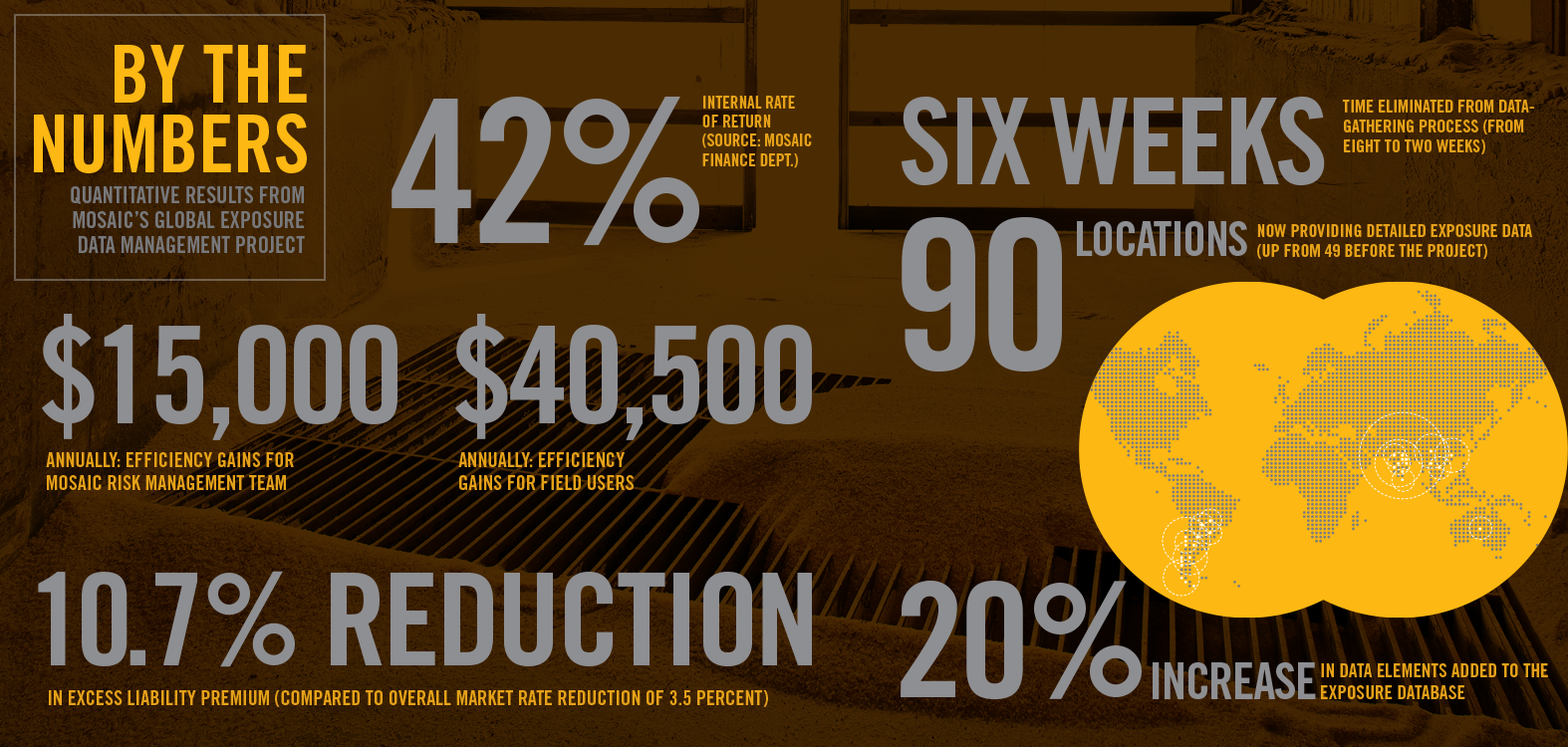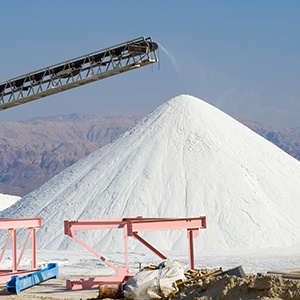Prioritizing exposure data management
According to Bishop, “The risk management team, with the support of executive management, identified a clear need to improve the management of our exposure data across all lines and geographies—to enhance our ability to access exposure data at a highly detailed level. We recognized that enhanced management and analysis of our exposure data would help us achieve the related goals of elevating our strategies in the areas of loss prevention, contractual risk transfer and other risk-mitigation initiatives in addition to improved marketing of our risk.”
To achieve its exposure data management goals, Mosaic augmented the Ventiv's RMIS with a module that automates the process of gathering, compiling and analyzing exposure data across multiple lines. The project began in spring 2010, and the first phase was completed in May 2011.
Mosaic began the global exposure data management project with its casualty, marine and executive risk lines. In phase two, Mosaic integrated exposure data related to property values and business interruption. In addition, Mosaic uses the system to track limitations or exclusions in its policies in order to ensure that, if the company has risks that are excluded from policies, those exposures are recognized and addressed through other mitigation strategies. As the project enters its second year of a three year rolling plan, Mosaic continues to add additional exposures to the system.
The tool automates the process of contacting locations around the world, prompting contacts to enter exposure data directly into the system and reminding them of deadlines and other expectations. All exposure data is stored in a common database.
In terms of reporting on exposure-data gathering and analysis, the system provides dashboards that keep the risk management team up to date in near real-time on where each location stands in the renewal-data-gathering process. Mosaic generates query reports on multiple topics, including head count, automobile and fleet data, hazardous chemicals, plant profiles, marine liability and cargo risks.











